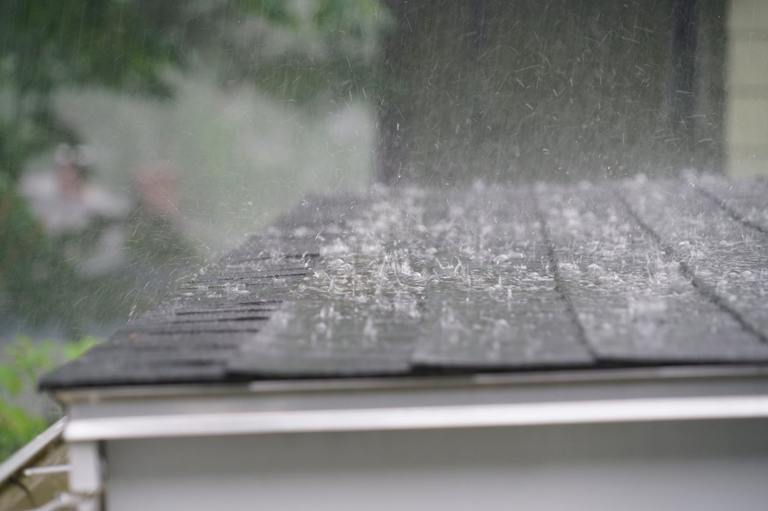Rainy Season Home Preparation to Prevent Unwanted Pests
Published: September 17, 2024

As the rainy season approaches, homeowners must brace themselves not only for potential flooding and water damage but also for an influx of pests seeking shelter. Ants, rodents, spiders, mosquitoes, and other home intruders tend to invade homes during this time in search of food and a dry haven. Understanding how these pests operate and taking proactive steps can help you safeguard your home effectively.
The Impact of Rain on Pest Behavior
Why Do Pests Seek Shelter During the Rainy Season?
When it rains, many pests are driven from their natural habitats due to flooding or excessive moisture. This displacement forces them to seek new environments that offer food and protection. Homes provide an ideal refuge with their abundance of resources and relatively stable conditions.

Common Pests During the Rainy Season
- Ants: Heavy rains can wash away ant nests, prompting colonies to move indoors.
- Rodents: Mice and rats often seek dry shelter in basements or attics when their burrows become flooded.
- Spiders: These arachnids may enter homes while hunting for insects that have also been displaced by rain.
- Mosquitoes: Standing water from rain creates breeding grounds for mosquitoes, leading to increased populations around homes.
- Termites: Moisture attracts termites as they thrive in damp wood, increasing the risk of infestations.
- Cockroaches: Rainwater can force cockroaches out of their hiding spots and into homes in search of food and shelter.
Preparing Your Home: A Comprehensive Checklist
1. Inspect and Seal Entry Points
- Windows and Doors: Check for gaps around windows and doors where pests can enter; use weather stripping or caulk to seal them.
- Cracks in Walls: Examine your home's exterior for cracks or holes in walls and foundations; repair any damages promptly.
- Vents and Chimneys: Ensure vents are covered with mesh screens and chimneys have caps to prevent rodent entry.
2. Manage Water Accumulation
- Gutters and Downspouts: Clean gutters regularly to prevent clogs that cause water overflow near your home's foundation.
- Drainage Systems: Ensure proper drainage away from your house by grading soil so that water flows away rather than pooling near the foundation.
- Standing Water Removal: Regularly check for standing water around your property (e.g., birdbaths, plant saucers) which serve as mosquito breeding sites.
3. Maintain Your Yard
- Trim Vegetation: Keep bushes, trees, and shrubs trimmed back from the house to reduce pest access points.
- Remove Debris: Clear piles of leaves, woodpiles, or other debris where pests might nest or hide.
- Lawn Care: Regularly mow the lawn to discourage rodents from nesting close by.
4. Protect Food Sources
- Proper Storage: Store food in airtight containers to avoid attracting ants or rodents inside your home.
- Trash Management: Use sealed trash bins both indoors and outdoors; empty them frequently.
5. Enhance Indoor Precautions
- Dehumidifiers: Use dehumidifiers in damp areas like basements to reduce moisture levels that attract pests such as termites or spiders.
- Regular Cleaning: Maintain a clean home environment by vacuuming regularly; this helps remove crumbs that could lure ants or rodents.
The Impact of Hurricanes on Pest Intrusion
Hurricanes bring with them not only the immediate threat of high winds and flooding but also a significant increase in pest activity. The severe weather conditions displace many pests from their natural habitats, forcing them to seek shelter in human dwellings. Floodwaters can drive rodents, insects, and other pests out of burrows and nests, while strong winds may destroy their habitats entirely. As these creatures search for new homes, they often find refuge in attics, basements, and other parts of residential structures that provide the warmth and safety they need.

In the aftermath of a hurricane, standing water becomes a major concern as it creates ideal breeding grounds for mosquitoes. Additionally, flood-damaged wood attracts termites and carpenter ants seeking moist environments to establish colonies. Homes with compromised structures or openings due to storm damage are particularly vulnerable to pest intrusions. Therefore, it's crucial for homeowners to conduct thorough inspections and make necessary repairs promptly after a hurricane passes. Proactive measures such as sealing entry points, managing debris around the property, and maintaining proper sanitation can significantly mitigate the risk of post-hurricane pest infestations.
Conclusion
Preparing your home for the rainy season is essential not only for preventing water damage but also for keeping unwanted pests at bay. By understanding how different types of pests behave during wet conditions—and implementing a thorough checklist—you can significantly reduce their chances of invading your living space.
Taking these preventive measures will ensure a safer, more comfortable home environment throughout the rainy season—keeping both you and your family protected from potential pest-related issues all year round!